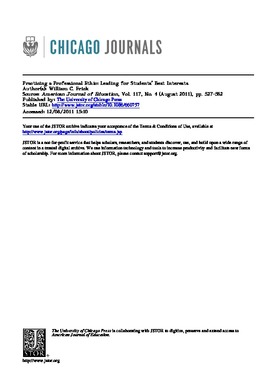| dc.description.abstract | This research examined secondary administrators’ perspectives about the expression
“the best interests of the student.” Principals’ intimate reflections provided
empirical insights into what they mean when they use the expression, “the
best interests of the student” and whether such a common catch phrase could
provide ethical guidance. A modified phenomenological research method suited
for an educational research context was used to capture administrators’ perspectives
and experiences. Results challenge the theoretical notion that the expression,
“serve the best interests of the student” is, or should be, used in some
primary, rule-based first order manner by administrators to inform their ethical
decision making. Ethical judgment was more complicated and contextually defined
than following a fundamental professional injunction, but the expression
resonated with administrators, typifying dispositions that promote moral practice.
Results and interpretations bring conceptual clarification to the moral leadership
construct “serve the best interests of the student.” | en_US |
